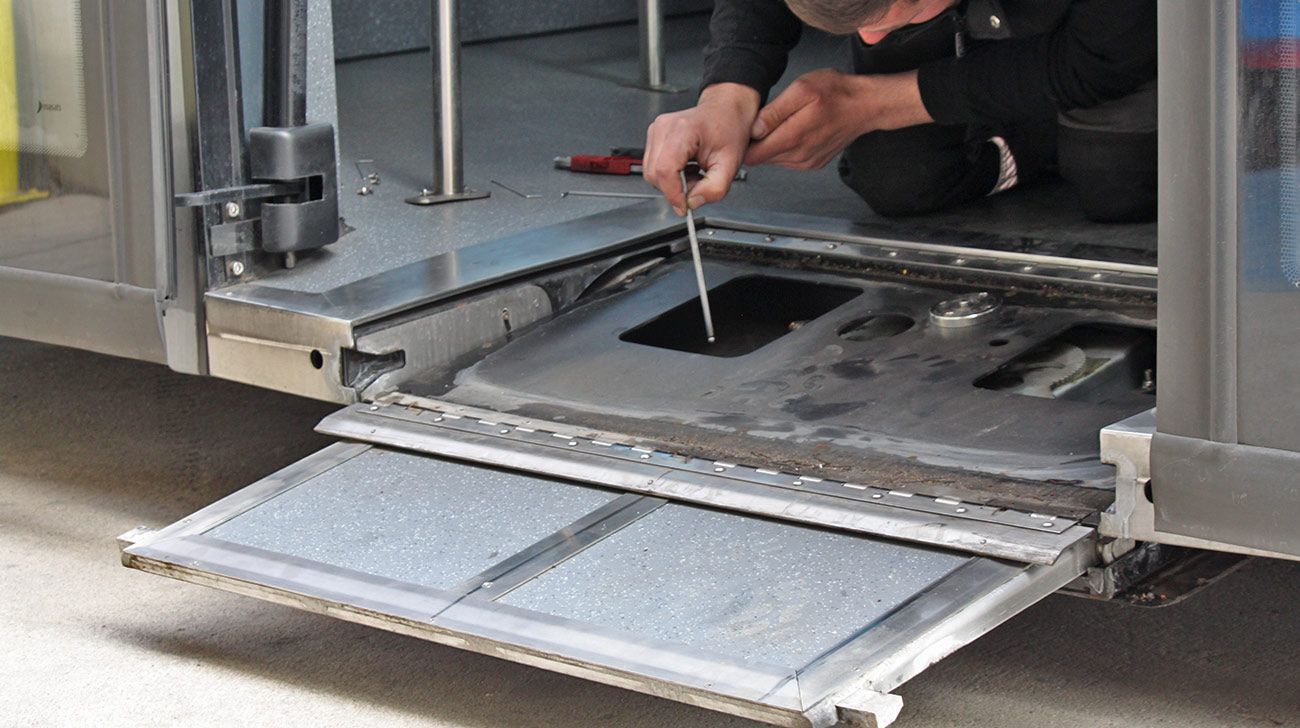
23 Mar Types of reduced mobility systems for public transport users
Types of reduced mobility systems for public transport users
The first consideration to make when we talk about systems for users of reduced mobility in public transport vehicles is that we refer to this circumstance in its wider casuistry. If a conditioning is done, it is mandatory that it be in a workshop with training and certifications.
On this subject, we do not only refer to those who have a mobility problem, but also to people who are blind, hard of hearing or unable to speak. As the situations are different, the spectrum of solutions that must be offered in public transport is also different. We are talking, then, about removing all the obstacles that hinder the use of these vehicles.
These 5 systems for people with reduced mobility can help make public transport more inclusive and suitable for all kinds of capacities:
Systems of reduced mobility
1. Access ramps for reduced mobility users
Bus access ramps are a necessary element to ensure accessibility. In this case, there are two options depending on the case: the ramp itself (which needs external help) or the platform, which can be monitored at ground level with a remote control and allows a greater autonomy of the user. This is a good option to facilitate entry and exit in the vehicle, provided they are of good quality and approved.
2. Braille language
The use of braille symbolism on bus surfaces, placed in strategic locations, helps the mobility of blind people. Beyond the use of canes or guide dogs, this is an option that results in the idea of autonomy. The practical implementation of this language is done through tactile signaling in areas of common use.
3. Entry and exit doors
The width of the doors is another essential aspect, if it is to facilitate mobility. Consequently, today the minimum amplitude that guarantees optimal accessibility to public and specialized transport is legislated, so it is an issue that is of great importance in order to prepare an urban or intercity transport vehicle.
4. Seats for persons with reduced mobility
People with mobility problems must have specific spaces, and this is achieved through two different procedures. First, indicating in writing that seats are of priority use for people with reduced mobility. Second, providing spacious spaces with specific support for people in wheelchairs.
5. Loudspeakers and screens connected to the Internet
Audio-visual and audio-visual equipment provides additional support for blind and disabled people. Loudspeakers and screens are two recurring and very useful solutions. Moreover, they can also be integrated, via Bluetooth, to mobile devices to facilitate communication, or incorporate WiFi in the vehicle.
At Consman we install all kinds of systems that facilitate accessibility for commercial vehicles, including urban and intercity public transport vehicles. We manage the installation in all types of fleets and, in this way, facilitate travel and safety.


No Comments